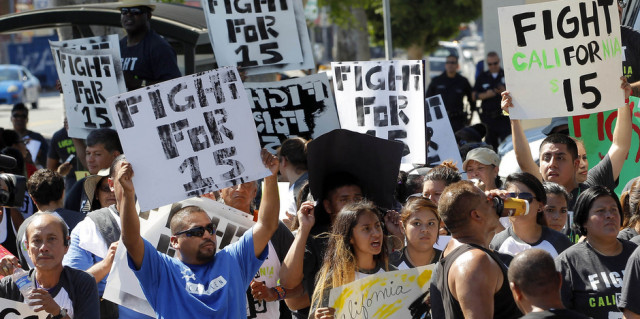Lest We Forget
Never in American history has a national leader served under a darker cloud of suspicion than Barack Hussein Obama. Was he born in Hawaii or in Kenya? He has two completely unique birth certificates; which is legitimate and which is a forgery? How many aliases and Social Security numbers has he used? Is his draft registration card legitimate, or is it too a forgery? How many people in the Democrat Party hierarchy were aware from the outset that he was ineligible to serve, and what steps did they take to legitimize his candidacy?
No man has ever done more irreparable damage to the United States. Yet, more than six years after he occupied the White House, illegally, these are still open questions and the American people have no idea who or what he is and where he came from. His origins are a mystery and his presidency is a blot on our nation’s history that time can never erase.
Nevertheless, his crimes cry out for justice, and although it appears unlikely that the Congress or the courts will ever find the courage to confront him, we simply cannot allow him to ride off into the sunset in January 2017, content in the knowledge that he has committed one of the greatest crime of all time and has paid no price for it. Instead, lest we forget, we must insure that our children and grandchildren know as much about Barack Obama as we are able to impart to them.
First, the question of his birth certificate(s): A Kenyan birth certificate, No. 32018, discovered in 2009, indicates that an infant named Barack Hussein Obama was born at the Coast Province General Hospital in Mombasa, Kenya, at 7:24 PM on August 4, 1961. The birth certificate is signed by John Kwame Odongo, Supervisor of Obstetrics, and is date-stamped and signed by Helton Maganga, Chief Administrator of the hospital. The birth was officially registered by Sir Edward. F. Lavendar, Registrar, on August 5, 1961.
Obama’s paternal grandmother has stated repeatedly that, on August 4, 1961, she and Obama’s parents attended a Muslim festival in Mombasa… his mother having been denied access to airplanes because she was nine months pregnant. Leaving the festival, the Obamas went to the beach to cool off, and while there his mother began to experience labor pains. She was rushed to the Coast Province General Hospital where she gave birth a few hours later, at 7:21 PM. Then, four days later, the Obamas allegedly flew back to Hawaii where they registered his birth with the Department of Health, obtaining a certificate of live birth which insured his status as an American citizen. His place of birth was registered as the Island of Oahu.
Recent attempts to verify whether or not the Obama family returned to U.S. soil on August 9th or 10th, 1961, have proven fruitless because all microfilm records of flights originating in Mombasa and entering the U.S. at Port of Entry (New York), contained in the National Archives and Records Administration Record Group A3573, Reels 184 and 185, covering the periods July 28, 1961 through August 7, 1961, and August 8, 1961 through August 12, 1961, respectively, are strangely missing. All Immigration and Naturalization Service (INS) records prior to July 28, 1961, and subsequent to August 12, 1961, are still available. None have been erased.
Images of Obama’s Kenyan birth certificate have circulated on the Internet and elsewhere for more than six years. Yet, in all that time, neither Obama nor any of his many supporters have been able to disprove its authenticity. Nor have they been able to establish the authenticity of his purported long form U.S. birth certificate, uploaded to the White House website by Obama, himself, on April 27, 2011. That document has been examined and evaluated by some of the country’s top electronic document examiners, including the document examiner employed by Obama’s own Washington law firm. All have found the document to be a complete forgery.
An authentic document, when scanned electronically using Adobe Illustrator software, will produce just one layer of data. Barack Obama’s long form birth certificate produces nine layers of data, indicating that it is a computer-generated document with information “imported” from other existing documents to create what appears to be an authentic birth document.
One of the world’s foremost experts in probability theory, Lord Monkton of Brenchley, has examined only thirteen irregularities contained in Obama’s long form birth certificate and has concluded that the probability that the document is authentic, not a forgery, is approximately 1 in 75 quadrillion… roughly equal to the chances of winning the Powerball Lottery and being struck by lightning, all on the same day. In other words, we can be relatively certain that the document Obama claims as his long form birth certificate is a forgery. Obama and his supporters have been challenged on numerous occasions to disprove that conclusion, but have failed to do so.
The Obama’s most recent federal tax returns show that he uses Social Security Number 042-68-4425… the first three digits, 042, indicating that the number was assigned to a person who was a resident of Connecticut. That same SSN, which was not assigned to him, has been associated with the names Barack Obama, Barack H. Obama, or Barack Hussein Obama at seven different addresses in Chicago, Somerville, MA, and Washington, DC. One more SSN, 282-80-XXXX, an Ohio SSN, is associated with his name and former office address in the Hart Senate Office Building in Washington. And although his Illinois Bar Association application indicates that he had no previous aliases, there is documentary evidence that he was known as Barry Soetoro when he lived in Indonesia until age ten with his mother and her second husband, Lolo Soetoro.
When he was eighteen years old, Obama was required to register for the draft; however, it appears he did not do so. Yet, when he launched his campaign for the presidency in 2008, not having a valid U.S. birth certificate, he found it necessary to create a bogus draft registration card as proof of his identity. The draft card that he produced was clearly a forgery. Among the many anomalies in his draft card was the U.S. Postal Service postmark at the lower right hand corner of the card. The postmark indicated that his draft registration card was officially accepted by the U.S. Postal Service on July 29, 80, six days before his nineteenth birthday.
However, there were no 1980 postmark hand stamps available in 2008, so it became necessary to “manufacture” such a stamp. Accordingly, it appears that someone in the Obama organization obtained a United States Postal Service 2008 hand stamp, sliced the “20” off the front of the 2008 portion, turned the remaining “08” portion of the stamp upside down, and inserted it so that the date stamp read July 29, 80. Investigators have found no draft registration cards from the 1970s and 1980s with the year of registration indicated by only a two-digit number.
Investigators have also found that the Document Location Number (DLN) in the upper right hand corner of all 2008 draft registration cards have only ten digits, with the first two digits being “08.” However, computer images of Obama’s draft registration card have a DLN containing eleven digits, with the first three digits being “808.” Clearly, someone has created a 2008 draft registration card, making it appear as if the registration took place in 1980.
Finally, we must never forget that high ranking members of the Democratic Party knew before he was nominated in 2008 that he was ineligible to serve as president. Since the “natural born Citizen” requirement had not been a problem in more than 230 years of U.S. history, why did two Democratic congressmen, Rep. Vic Snyder (D-AR) and Rep. John Conyers (D-MI), find it necessary to introduce four constitutional amendments in Congress in 2003 and 2005… when Obama was being groomed… eliminating the “natural born” constitutional requirement?
At the close of the Democratic nominating convention in 2008, a certification was sent to all fifty states so that ballots could be printed. The certification sent only to the State of Hawaii (Hawaii Revised Statutes §11-113 requires specific certification language) reads as follows:
“THIS IS TO CERTIFY that at the National Convention of the Democrat Party of the United States of America, held in Denver, Colorado on August 25 though (sic) 28, 2008, the following were duly nominated candidates of said Party for President and Vice President of the United States respectively and that the following candidates for President and Vice President of the United States are legally qualified to serve under the provisions of the United States Constitution.”
The remaining forty-nine states received the following certification:
“THIS IS TO CERTIFY that at the National Convention of the Democrat Party of the United States of America, held in Denver, Colorado on August 25 though (sic) 28, 2008, the following were duly nominated as candidates of said Party for President and Vice President of the United States respectively:”
Affixed were the names and home addresses of Barack Obama and Joe Biden. The documents were signed by Nancy Pelosi and Alice Travis Germond, Chairman and Secretary, respectively, of the 2008 Democratic National Convention, and notarized by Shalifa A. Williamson.
The phrase, “… and that the following candidates for President and Vice President of the United States are legally qualified to serve under the provisions of the United States Constitution.” was purposely omitted. Other than that, all of the certifications were absolutely identical… even to the misspelling of the word “through” in the second line of the certifications.
The Obama era has been a unique episode in American history… an episode characterized as nothing short of pure evil. In attempting to “fundamentally transform” the United States into something unrecognizable among the community of nations, Barack Obama has done much irreparable harm. So, lest we forget, let us take our children and our grandchildren on our knees and tell them the truth of how one evil man brought our great nation to the edge of extinction. The evil that he has done cannot be allowed to simply disappear with the passage of time.

































